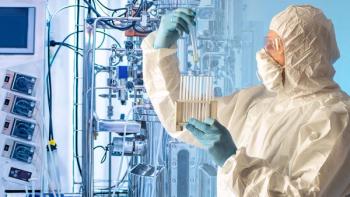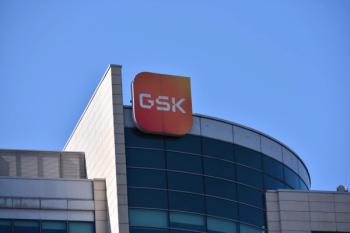
- BioPharm International-07-01-2010
- Volume 23
- Issue 7
How Outsourcing Can Accelerate Early CMC Development
How much to spend on early development, whether to use your CMO's proprietary cell line, and other outsourcing advice.
Using contract manufacturers and contract research organizations (CMOs and CROs) is a well-established part of any development program. In this interview, recorded live at the 2010 BIO convention in Chicago in May, Jim Miller, president of PharmSource Information Services, and Susan Dana Jones, vice president and senior consultant at BioProcess Technology Consultants, discuss how biopharmaceutical companies can use CMOs and CROs more effectively. Below are excerpts from the conversation.
Don Farrall/Getty Images
MILLER: At what point in the development process should companies be looking for a CMO to work with them on their early-stage CMC requirements?
JONES: You might want to start looking for a CMO before you have identified your lead compound. There are some companies that will help you identify your lead compound and tell you which one has the best qualities to move forward into manufacturing. Otherwise, when you have identified your lead compound, you should already be thinking about how to manufacture it and at what scale, and what your needs are going to be for early clinical trials, and go from there to figure out which CMO you want to work with.
MILLER: Does that mean you really need to have some experience in developing a drug or work with somebody who can advise you on what decisions to make and when?
JONES: It's certainly helpful to have advisors who have knowledge about drug development. A lot of new products are coming out of academic laboratories, where there is less experience in drug development. They should look earlier for development help and get CMOs involved as early as possible.
MILLER: When you go out to look for a CMO, what kind of information should you have in hand that you can bring to them, so that they can evaluate your requirements?
JONES: Obviously you should know what your compound is and what you are trying to manufacture, and anything you know about its performance characteristics. For example, is glycosylation important, so it needs to be in a mammalian system? Is it small and can you make it in a microbial system? Anything you know about what the product is going to end up looking like is very important.
MILLER: What characteristics should a biopharmaceutical company look for when it is choosing a CMO?
JONES: There are different types of CMOs out there with different service offerings. It depends really on what your resources are, what your risk tolerance is, and what your long-term strategy is. If you have the resources, you may choose a CMO that can take you all the way through commercialization, that has full quality and compliance systems, and larger bioreactors. Maybe you prefer to go with a smaller, high-quality, earlier-stage CMO that's not going to get you all the way through, and plan to do a technology transfer later to a larger organization for late-stage and commercialization. There are a variety of other attributes that you should consider, including location. One of the most important things is identifying a team of people you can work with, so that when you meet them, the interactions are good and you know you can develop a process with them.
MILLER: Many CMOs these days are offering proprietary expression systems with the promise that those systems have been optimized and can get you into the clinic more quickly, and can give you much better yields sooner than if you have to develop an expression system from scratch. What's your feeling about the tradeoff between proprietary systems and individually developed systems?
JONES: It's true that there are a number of proprietary expression systems, both mammalian and microbial, and that you will pay some kind of license fee, access fee, or royalty for, but that can give you much higher expression so you can run fewer batches earlier on. That will lead to significant cost savings and give you better cost of goods in the later stages when you commercialize the product. If you have the time and don't need as much product and don't want to pay for it, then there are systems out there that have been off patent and that also can be accessed. I certainly believe there are benefits of proprietary expression systems but I believe they are not for everybody.
MILLER: And if you choose to use a proprietary expression system at the early stages, are you then committed to using that system all the way through?
JONES: Yes, because ideally if you can develop a cell line at the very beginning that will take you through to commercialization, you are better off. It is one of the things that is the most difficult to change. If you can get your cell line right the first time, it will mean significant cost savings in the later stages of your development program. So you should choose a system that you are going to stick with.
MILLER: How about when it comes to bioreactor technologies on the market today—flexible bag-based systems that use a lot of disposables. Are there pros and cons of using those systems versus traditional tank-based systems?
JONES: Especially in a CMO, which is by definition a multiproduct facility, there are significant benefits to using disposable systems, eliminating the need to do the cleaning between batches of different products. At the later stages, as you reach larger scales, it's less important as you get to more and more batches of the same product. A lot of companies are using disposable seed reactors for the smaller volumes that are needed before you inoculate the large final production reactor.
MILLER: A big question for a lot of companies is where can they find cost savings in the manufacturing process, and where they should spend money to make sure they get a good outcome.
JONES: At the beginning I said the cell line is very important; it is the crown jewel, something that regulatory authorities look very closely at. It is worth spending the money to get your production cell line right. During process development in the early stages, you can spend as much or as little as you want. If you spend more to get more information about your process, the better armed you are for the later stages. But to get to the clinic quickly, you can implement platform processes for well-characterized classes of molecules such as antibodies. Or you could spend less time; you have to meet safety requirements, but you can spend a lot less money on process development early on.
MILLER: In your experience, what are some of the most biggest mistakes that biopharmaceutical companies make in dealing with a CMO?
JONES: One of the biggest problems is not having the understanding of what your molecule is supposed to look like—not having the analytical methods in place and not understanding what you are asking the CMO to make, and also not having methods that you can transfer to the CMO. I have actually seen projects delayed because analytical methods weren't in place in the hands of the quality control group, and they couldn't do the production run. Another mistake working with CMOs is throwing the process over the fence and waiting for the results to come back. You need to manage the CMO and work with them. You are a team and you are working together on your product, but they are providing the resources. So you need to work together.
This interview has been edited for length and clarity.
Articles in this issue
over 15 years ago
BioPharm International, July 2010 Issue (PDF)over 15 years ago
How to Apply Risk Assessment Techniques to Outsourcingover 15 years ago
Capital Market's Woes Weigh Heavily on Biotechover 15 years ago
Robust Experimental Strategies for Improving Upstream Productivityover 15 years ago
How to Reduce Unnecessary Compliance Costsover 15 years ago
Highly Similarover 15 years ago
Industry Input Needed on Bioassay Standardsover 15 years ago
The Effect of Limiting Phosphate Using the HMS174 Cell Lineover 15 years ago
What the Pharmaceutical Industry Can Learn From Toyota's RecallsNewsletter
Stay at the forefront of biopharmaceutical innovation—subscribe to BioPharm International for expert insights on drug development, manufacturing, compliance, and more.




